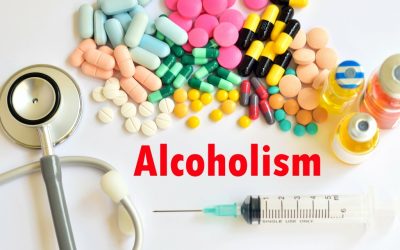End-Stage Alcoholism: Signs, Symptoms, and Treatment Options
Even if your loved one seeks help, you may still need help and support to overcome the effects. Many people refer to alcoholism as a «family disease» because it can have a major impact on all members of the family, whether they realize it or not. It’s essential to seek out support and resources to help yourself and other family members who may have been affected by their loved ones drinking. The impact of alcoholism on family members can vary depending on the severity of the addiction. In early-stage alcoholism, family members may notice changes in their loved one’s behavior or mood swings when they drink.
Chronic Pancreatitis

Integrated treatment addressing both mental health and alcohol addiction is crucial for effective recovery. Community support, public health initiatives, and ongoing counseling play vital roles in preventing alcohol misuse and maintaining sobriety. A comprehensive approach is necessary for recovering from end stage alcoholism. This involves medical detoxification, long-term rehabilitation, and psychological support. While the journey is challenging, it is possible with the right support and treatment.

What Are the Early Signs of Alcoholism?
Typically, the first step in alcohol addiction treatment is medical detox. Alcohol withdrawal can have dangerous symptoms like seizures and delirium tremens Sober living house (DTs), but medical detox provides a team to monitor your health, manage symptoms, and prevent complications. Outside of the phenomenon of craving and the negative mental and social effects of late-stage alcoholism, there are substantial health problems that often follow heavy drinking over time. It not only has no nutritional value — it is also damaging to the body’s tissues, systems, and processes. Pancreatitis, another devastating complication, becomes chronic and untreatable in the final stages of alcoholism. Repeated inflammation of the pancreas due to alcohol consumption leads to irreversible damage, causing severe abdominal pain, digestive issues, and malnutrition.
Find Effective Treatment for Alcoholism
Despite its severity, end-stage alcoholism is treatable with the right approach. Treatment typically involves a combination of medical care, therapy, and lifestyle changes to address both the physical and emotional aspects of the condition. The average life expectancy of an alcoholic can be significantly shorter than that of the general population. It varies depending on factors such as overall health, the severity of alcoholism, the presence of other health conditions, and access to treatment. However, end-stage alcoholism can lead to a significantly reduced life expectancy. A condition known as alcohol-related liver disease worsens and leads to cirrhosis with heavy drinking.

Treatment Facilities
- After many years of substance abuse, your addiction can take a toll on your relationships.
- Here are some of the major ways and signs of end-stage alcoholism affecting the body.
- Other long-term health risks of alcohol abuse, like heart problems and stroke, stem from chronic alcohol abuse in end-stage alcoholism.
- Typically, people in the first stage of alcoholism do not notice the harmful effects of alcohol because they’re not experiencing withdrawal symptoms.
- End-stage alcoholism typically follows years of untreated or poorly managed alcohol addiction.
Family members can support their loved ones by encouraging https://roohbd.com/famous-alcoholics-recovered-in-recovery-or/ them to seek professional help, offering emotional support, and participating in family therapy sessions. Understanding the disease and being patient and compassionate are also crucial. End-stage alcoholism is why The Forge Recovery Center calls alcoholism a family disease. It’s devastating for both the person struggling with alcoholism and the people around them.
- Intensive therapy & support for those who do not require 24/7 hospitalization.
- Genetics and family history both play a role in the development of alcoholism and the end-stage conditions that it eventually leads to.
- Although you may feel resentful, regret and hopeless when it happens, it is possible to embark on the journey to a drug-free life.
End-stage alcoholism brain damage
These meetings offer a safe space to share experiences, receive advice, and connect with others who understand the challenges of addiction. It’s important to address the psychological dependence on alcohol and develop healthy coping mechanisms to manage stress and other triggers that may lead to drinking. He developed the concept of the progressive phases of alcoholism, which became known as the Jellinek curve. He defined and described the disease’s progression, including its physical and mental characteristics. Learn the symptoms and risk factors of Wernicke-Korsakoff Syndrome, plus how to get help for alcohol-related brain damage. In any stage of addiction and recovery, social support can help you heal from AUD.13 You may benefit from family therapy, peer support, or attending 12-Step groups like Alcoholics Anonymous (AA).
- You may need more alcohol to get the same relaxed feeling, or you might feel anxious or shaky when you haven’t had a drink in a while.
- Conditions such as cardiovascular issues may also be partially managed with proper medical care and abstinence from alcohol.
- One of the primary physical symptoms of the final stage of alcoholism is that the alcoholic is chronically drunk.
If you or someone you love is ready to take the next step, reach out to a trusted rehab center to explore your options. If you’re looking for treatment, please browse the site to reach out to treatment centers directly. This stage can be difficult for the user and their loved ones to see a way out of their addiction but there is a solution. It is considered binge drinking of men when they consume more than five drinks in a two-hour window. An estimated 17 million Americans are diagnosed with alcohol use disorder while 855 million ages 12 to 17 have alcohol use disorder. Living with an alcoholic often means dealing with unpredictable behavior, strained communication, financial problems, and emotional stress, all of which can impact the entire household.
This means that anyone who feels like they’re on the path to addiction in one of these four stages can create a whole new fifth stage – recovery. Outlining the four phases of alcohol addiction, including the key signs and potential effects of each stage. At this point, many body organs are failing, and thus predisposing the alcoholic to a slow, painful death. Whether you are struggling with addiction, mental health or both, our expert team is here to guide you every step of the way.
Treatment for End-Stage Alcoholism
The information we provide is not intended to be a substitute for professional medical advice, diagnosis or treatment. It should not be used in place of the advice of your physician or other qualified healthcare provider. It should not be used in place of the advice of your physician or other qualified healthcare providers. An end-stage alcoholic stages of alcoholism will experience life-threatening withdrawal symptoms when they stop drinking.
